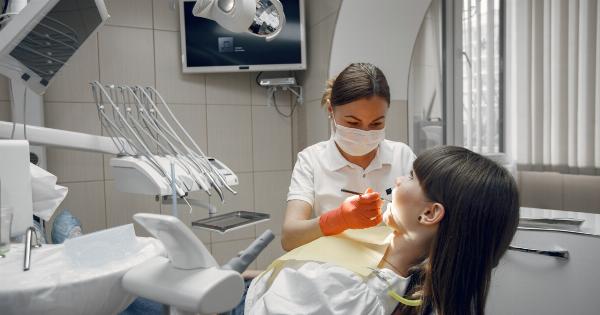Diabetes is a chronic condition that affects millions of people worldwide. It requires careful management to prevent complications and maintain a good quality of life.
One of the most critical challenges that diabetics face is managing their blood sugar levels. Both high blood sugar (hyperglycemia) and low blood sugar (hypoglycemia) can have severe health consequences. In this article, we will focus on the importance of diabetics being cautious of hypoglycemia and its potential impact on eye health.
The Basics of Diabetes and Hypoglycemia
Diabetes is a condition characterized by the body’s inability to properly regulate blood sugar levels. There are two primary types of diabetes – type 1 and type 2.
Type 1 diabetes occurs when the body doesn’t produce enough insulin, while type 2 diabetes occurs when the body becomes resistant to insulin.
Hypoglycemia, on the other hand, refers to low blood sugar levels.
It typically occurs when a person with diabetes takes too much insulin or other diabetes medications, skips meals, or engages in physical activity without adjusting their medication or food intake.
The Dangers of Hypoglycemia in Diabetics
Hypoglycemia can have various detrimental effects on a person’s health, particularly for those with diabetes. Some of the dangers include:.
1. Brain Function
When the brain doesn’t receive enough glucose (sugar) due to low blood sugar levels, it can impair cognitive function. This can lead to confusion, difficulty concentrating, dizziness, and even loss of consciousness in severe cases.
2. Cardiovascular Health
Hypoglycemia can trigger an increased heart rate, which puts stress on the cardiovascular system. This stress can be especially dangerous for individuals with pre-existing heart conditions or poor heart health.
3. Emotional Health
Low blood sugar levels can also have an impact on a person’s emotional well-being. It may contribute to feelings of irritability, mood swings, anxiety, and even depression.
4. Energy Levels
When the body’s main source of fuel, glucose, is depleted, individuals may experience extreme fatigue, weakness, and difficulty carrying out daily activities.
5. Increased Risk of Accidents
The symptoms of hypoglycemia, such as dizziness and confusion, can increase the risk of accidents and injuries. This risk is particularly concerning when driving or operating heavy machinery.
The Link Between Hypoglycemia and Eye Damage
In addition to the immediate dangers, hypoglycemia can also have long-term consequences for eye health in diabetics. Here are some key connections:.
1. Retinopathy
Retinopathy is a common eye disease in individuals with diabetes. It occurs when the blood vessels in the retina, the part of the eye responsible for vision, become damaged.
Hypoglycemia can worsen retinopathy by causing additional stress on the blood vessels and accelerating their deterioration.
2. Vision Impairment
Episodes of hypoglycemia, particularly if severe or recurrent, can result in temporary or permanent vision impairment. Changes in blood sugar levels can affect the shape of the lens in the eye, leading to blurred vision or difficulty focusing.
3. Eye Infections
Hypoglycemia weakens the immune system, making individuals more susceptible to infections.
This includes infections in the eyes, such as conjunctivitis (pink eye) or more severe conditions like endophthalmitis, which can lead to vision loss if not promptly treated.
4. Delayed Healing
When blood sugar levels drop too low, the body’s ability to heal from injuries, including those in the eyes, is compromised. This delay in healing increases the risk of complications and potential permanent damage.
Preventing Hypoglycemia and Protecting Eye Health
Given the potential dangers and risks associated with hypoglycemia, it is crucial for diabetics to take preventive measures and protect their eye health. Here are some tips:.
1. Monitor Blood Sugar Levels Regularly
Frequent monitoring of blood sugar levels helps diabetics recognize when their levels are dropping and take appropriate action before it becomes severe.
Regular monitoring is especially important before and after meals, during physical activity, and at bedtime.
2. Adjust Medication and Food Intake
Working closely with healthcare professionals, diabetics should adjust their medication dosage and food intake based on their blood sugar levels and activity levels. This helps maintain a balance and minimizes the likelihood of hypoglycemia.
3. Carry a Snack or Glucose Tablets
Carrying a quick-acting carbohydrate snack or glucose tablets at all times is necessary for emergency situations when blood sugar levels drop unexpectedly. These snacks can help bring blood sugar levels back to a safe range swiftly.
4. Wear a Medical Alert Bracelet
Diabetics should consider wearing a medical alert bracelet or necklace that indicates their condition.
In case of severe hypoglycemia or other emergencies, medical professionals can quickly identify the cause of the symptoms and provide appropriate care.
5. Regular Eye Examinations
Regular eye examinations, conducted by an eye care professional experienced in diabetic eye disease, are vital for early detection of any eye-related complications.
Early intervention and treatment can help prevent or minimize the progression of eye damage.
Conclusion
Hypoglycemia poses significant risks to the health and well-being of diabetics and can have severe consequences for eye health. By understanding the potential dangers of hypoglycemia and taking necessary precautions, diabetics can minimize this risk.
Regular monitoring of blood sugar levels, adjusting medication and food intake, and maintaining regular eye examinations are essential steps in preserving eye health and overall quality of life for individuals with diabetes.





























